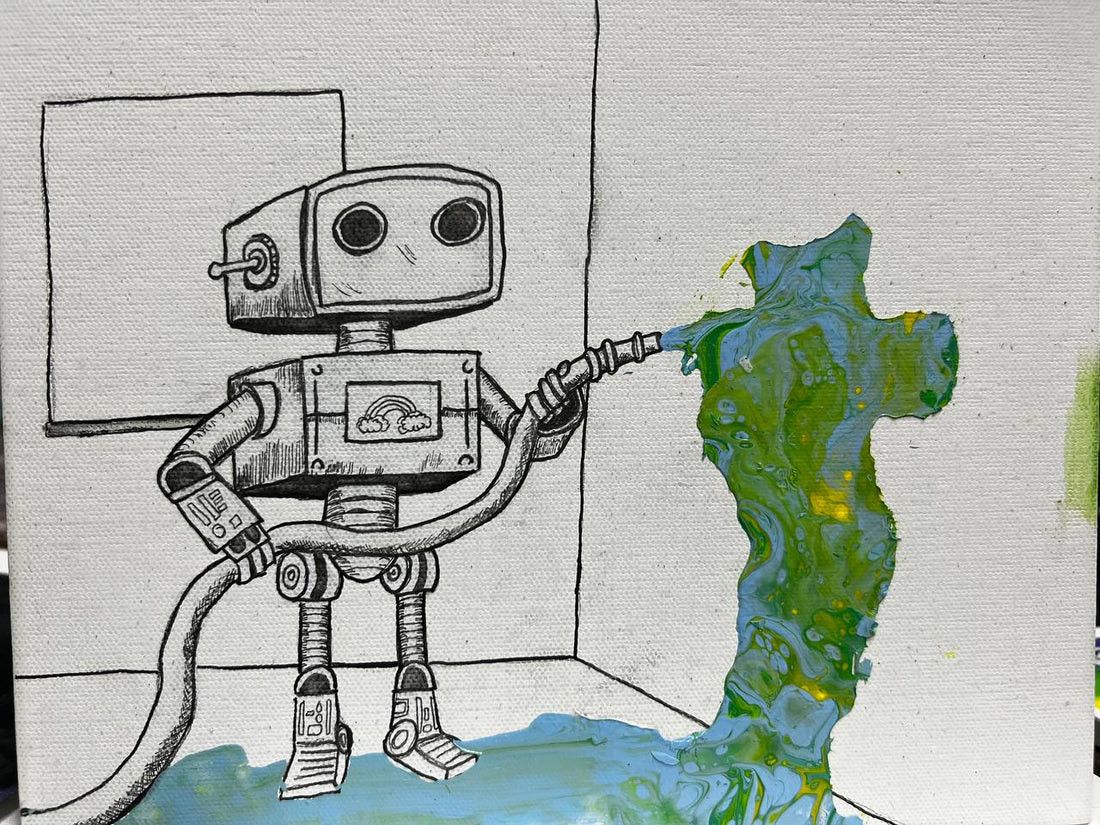
The Colors of Emotion: Using Color Theory to Quiet the Mind
Share
When the Mind Won’t Slow Down
Ever felt like your thoughts are racing, jumping from one worry to the next, making it impossible to find peace? Depression and anxiety can turn your mind into a chaotic swirl of noise, drowning out clarity and calm. But what if there was a way to quiet those thoughts—not with words, but with color?
The Psychology of Color
Color has a direct impact on our emotions. It’s why blue skies can feel calming, why warm yellows bring a sense of comfort, and why deep reds can stir up intensity. Color theory—the science of how colors affect perception and mood—can be a powerful tool in managing emotions, especially when everything feels overwhelming.
Here’s how different colors interact with emotions and how they can help guide you toward inner peace:
-
Blue: Known for its calming and stabilizing effect, blue can help slow racing thoughts and bring a sense of control. It’s why oceans and wide-open skies feel so peaceful. If your mind won’t stop spinning, surrounding yourself with cool blues—whether through lighting, clothing, or artwork—can help.
-
Green: Often associated with renewal and balance, green can ground you in the present. This is why nature is so healing. Studies show that being around greenery or even just looking at the color green can reduce stress and lower heart rates.
-
Yellow: A tricky color—bright yellows can boost energy and optimism, but neon shades may increase anxiety. Soft, golden tones can be comforting, like the glow of the sun on a quiet morning.
-
Purple: A blend of calming blue and energizing red, purple is often linked to introspection and creativity. It can be a great color for journaling, meditation, or self-reflection.
-
Red: While red is often associated with strong emotions like passion or anger, deeper reds can feel grounding. If you need motivation or a push to take action, incorporating red into your environment can help—just in moderation.
How Bolt Voltage Uses Color for Emotional Regulation
In Bolt Voltage, color is more than just an aesthetic choice—it plays a role in how emotions are expressed and processed. As Bolt experiences emotions for the first time, his LED screen flickers between hues, mirroring his inner state. When overwhelmed, his world is bathed in harsh, erratic tones. When he finds clarity, the colors soften, helping him stabilize.
Just like Bolt, we can use color to influence our mood. If your thoughts are overwhelming, consider engaging in color-based mindfulness:
-
Coloring as Meditation: Engaging in a coloring book (like Bolt Voltage!) isn’t just fun—it’s a way to focus your mind and create a sense of control over chaos.
-
Surrounding Yourself with Comforting Hues: Whether it’s painting your room a soft blue, wearing calming greens, or using warm lighting, small changes in color can shift your mood.
-
Art as Emotional Expression: If you struggle to put feelings into words, let colors do the talking. Painting, sketching, or even digital art can be a powerful outlet.
Further Reading on Color and Mental Health
Want to dive deeper into how color influences the mind? Check out these resources:
-
Verywell Mind (https://www.verywellmind.com) – Articles on color psychology and mental wellness.
-
The National Institute of Mental Health (https://www.nimh.nih.gov) – Resources on depression, anxiety, and emotional regulation.
-
Mindful.org (https://www.mindful.org) – Guides on mindfulness and self-soothing techniques.
Defining Your Own Palette of Peace
At the end of the day, color is personal. What soothes one person might not work for another, and that’s okay. The key is to notice what colors make you feel safe, balanced, and understood—and to surround yourself with them. Bolt Voltage explores this in its own way, showing that sometimes, emotions aren’t meant to be controlled with logic but rather embraced and expressed through something as simple as color.
So, what colors make you feel at home within yourself? Start exploring and painting your world in a way that brings you peace.
